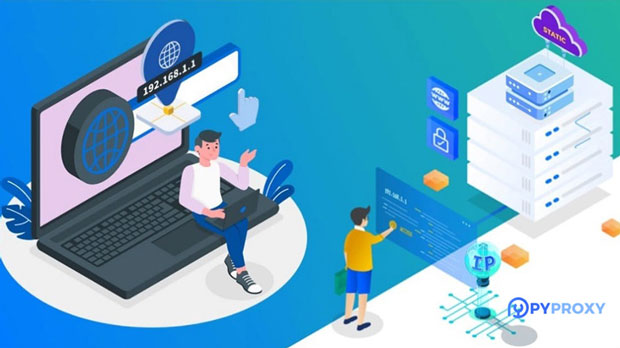socks5 proxy services are widely used by individuals and businesses alike to maintain privacy, secure online activities, and bypass geographic restrictions. While desktop users have been leveraging socks5 proxies for years, the rise of mobile devices has led to a surge in mobile proxy services. A common question arises—does the cost of using a SOCKS5 proxy service on mobile devices differ from that on computers? This article explores the factors affecting pricing and provides insights into how mobile and desktop SOCKS5 proxies compare in terms of cost, usability, and features. Understanding SOCKS5 Proxy ServicesBefore diving into the pricing comparison, it is essential to understand what a SOCKS5 proxy is and how it functions. A SOCKS5 proxy operates at a lower layer of the OSI model compared to traditional HTTP proxies. This allows it to handle a broader range of internet traffic, such as email, gaming, and peer-to-peer file sharing, providing better flexibility. It works by routing user data through an intermediary server, which hides the user's original IP address, offering anonymity and the ability to bypass internet censorship.SOCKS5 proxies are especially beneficial for people who prioritize privacy, security, or those who need to access restricted content in a specific geographic region. However, just like any other service, the pricing structure of SOCKS5 proxies is influenced by several factors, including the platform being used (mobile or desktop).Factors Affecting the Price of SOCKS5 Proxy ServicesSeveral factors contribute to the pricing differences of SOCKS5 proxy services, whether for mobile or desktop use. Understanding these variables helps explain why mobile SOCKS5 proxies are often cheaper than their desktop counterparts.1. Device Processing Power and Data Consumption Mobile devices generally have lower processing power than desktop computers, which can affect the performance of certain proxy services. While desktop computers are often equipped with robust hardware capable of handling higher bandwidth and complex data requests, mobile devices are optimized for lighter tasks. As a result, the demand for processing power and server capacity on mobile networks is lower, which can reduce the overall cost for the service providers.2. Network Infrastructure and Accessibility The mobile internet infrastructure is typically designed to support a higher volume of users with relatively lower data consumption. Mobile networks use more efficient algorithms for data compression and packet transmission, which allows for more cost-effective operations. On the other hand, desktop users often engage in heavier activities like streaming or gaming, which require higher data throughput and more robust network support, leading to increased costs for providers.3. Target Audience and Service Plans Providers often tailor their services based on the intended user base. Mobile users are generally looking for lightweight, on-the-go solutions that are easy to use and affordable. Providers may offer more budget-friendly options to meet this demand. Desktop users, in contrast, often require more robust and high-speed connections, which tend to come at a higher price point. Businesses and advanced users who rely on desktop proxies may also need features such as static IPs, high bandwidth, or enhanced security, driving the price up.4. Subscription Models and Billing Cycles Mobile SOCKS5 proxy services often operate on shorter billing cycles, such as weekly or monthly plans, whereas desktop proxy services may offer longer-term plans with better discounts for annual subscriptions. Mobile proxy services may also be sold as part of a larger mobile VPN package, which can be priced more competitively compared to standalone desktop solutions. The flexibility and shorter commitment periods of mobile proxies are appealing to casual users, which could drive down their pricing relative to desktop services.Comparing Mobile vs. Desktop SOCKS5 Proxy PricingNow that we’ve considered the factors that influence pricing, let's compare the cost of mobile and desktop SOCKS5 proxies.1. General Pricing Overview On average, mobile SOCKS5 proxies tend to be less expensive than desktop counterparts. This is primarily due to the lower processing and data needs of mobile devices, as well as the service plans tailored to budget-conscious users. You may find that mobile SOCKS5 proxy services are often priced between $5 to $15 per month, depending on the provider and additional features. Desktop SOCKS5 proxies, on the other hand, typically start around $10 per month and can rise to $30 or more, depending on bandwidth, static IP availability, and other premium services.2. Cost-Effective Solutions for Casual Users If you’re a casual user who only needs a SOCKS5 proxy for light browsing or limited applications like accessing geo-restricted content, a mobile SOCKS5 proxy might be the best option in terms of cost-efficiency. Providers recognize that mobile users are generally less willing to commit to high monthly fees, so they offer scaled-back versions of their desktop proxies with fewer features at a more affordable price.3. Higher Costs for Desktop Features and Advanced Use Desktop SOCKS5 proxy services, by comparison, tend to come with more advanced features, such as higher bandwidth, more server locations, and enhanced security measures. These proxies are ideal for users engaged in high-performance tasks like online gaming, streaming, or business-related activities. As a result, the cost of a desktop SOCKS5 proxy is typically higher, reflecting the increased demands for more robust infrastructure and features that provide optimal performance for intensive online activities.Are Mobile SOCKS5 Proxies Worth It? Analyzing User NeedsThe decision to choose between mobile and desktop SOCKS5 proxy services largely depends on your specific needs and how you intend to use the service.1. Use Cases for Mobile SOCKS5 Proxies Mobile SOCKS5 proxies are perfect for users who require portability and don’t need a high level of performance. They are ideal for basic browsing, accessing region-locked content, or securing your connection while using public Wi-Fi networks. If you frequently travel and need a reliable, cost-effective solution for online privacy, mobile SOCKS5 proxies offer a great balance between price and functionality.2. Use Cases for Desktop SOCKS5 Proxies Desktop users, on the other hand, might prioritize performance, reliability, and enhanced security. If your work involves tasks that consume significant bandwidth, like streaming, downloading large files, or accessing sensitive information, a desktop SOCKS5 proxy may be more appropriate. While it is more expensive, the benefits of a stable, fast connection and the ability to handle intensive activities are crucial for many professionals and advanced users.Conclusion: Why the Price Difference ExistsIn conclusion, mobile SOCKS5 proxy services are generally cheaper than their desktop counterparts due to factors such as lower processing requirements, lighter data demands, and tailored subscription models designed for casual users. While mobile proxies offer affordability and convenience, they are not always the best choice for heavy internet users who require higher performance. Desktop proxies, though more expensive, offer more robust features and better support for intensive online activities. Ultimately, the choice between mobile and desktop SOCKS5 proxies comes down to balancing cost with functionality based on your specific online needs. By understanding the key differences in pricing and service offerings, users can make a more informed decision about which type of proxy service is right for them.
Jan 10, 2025






















































